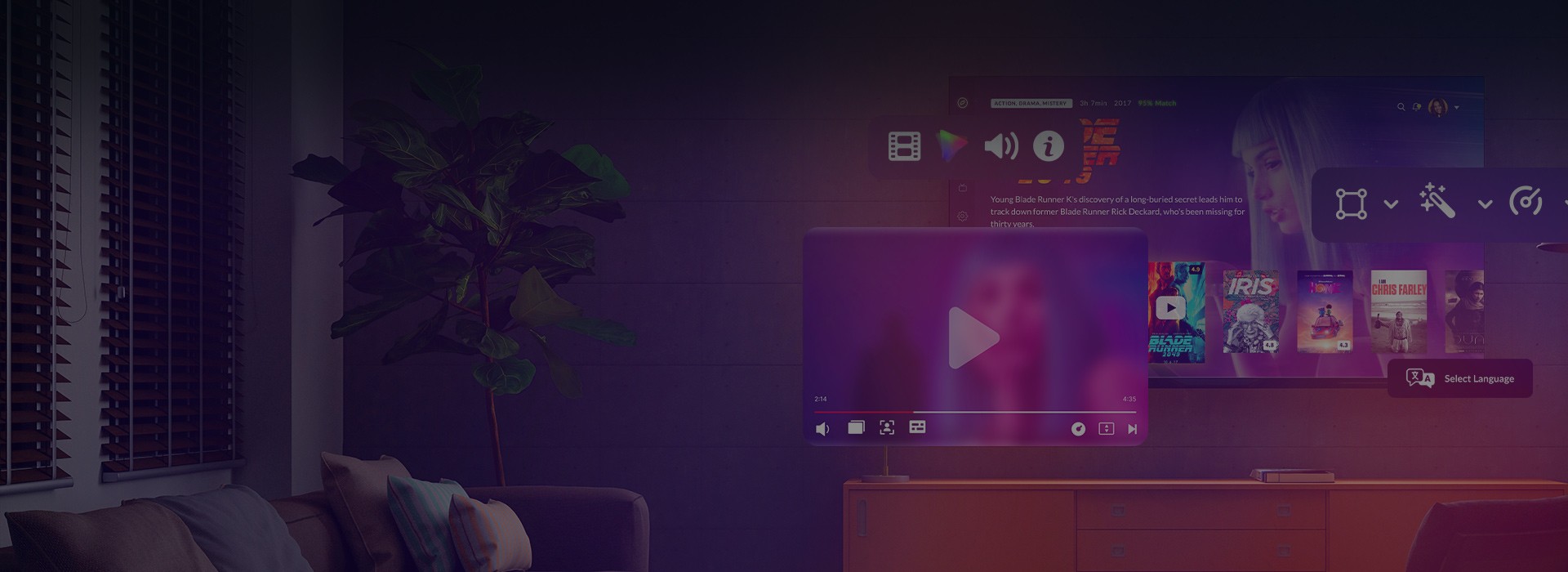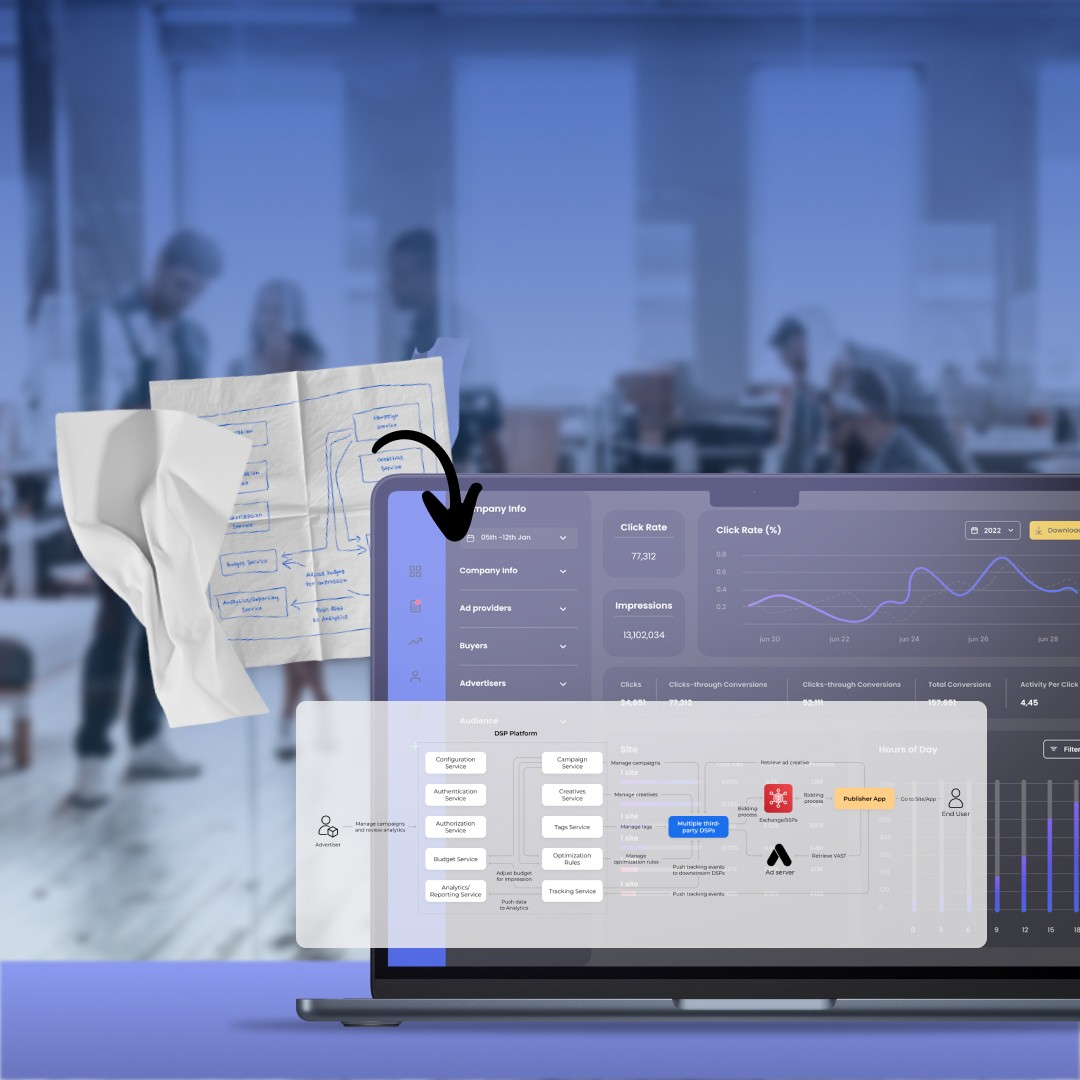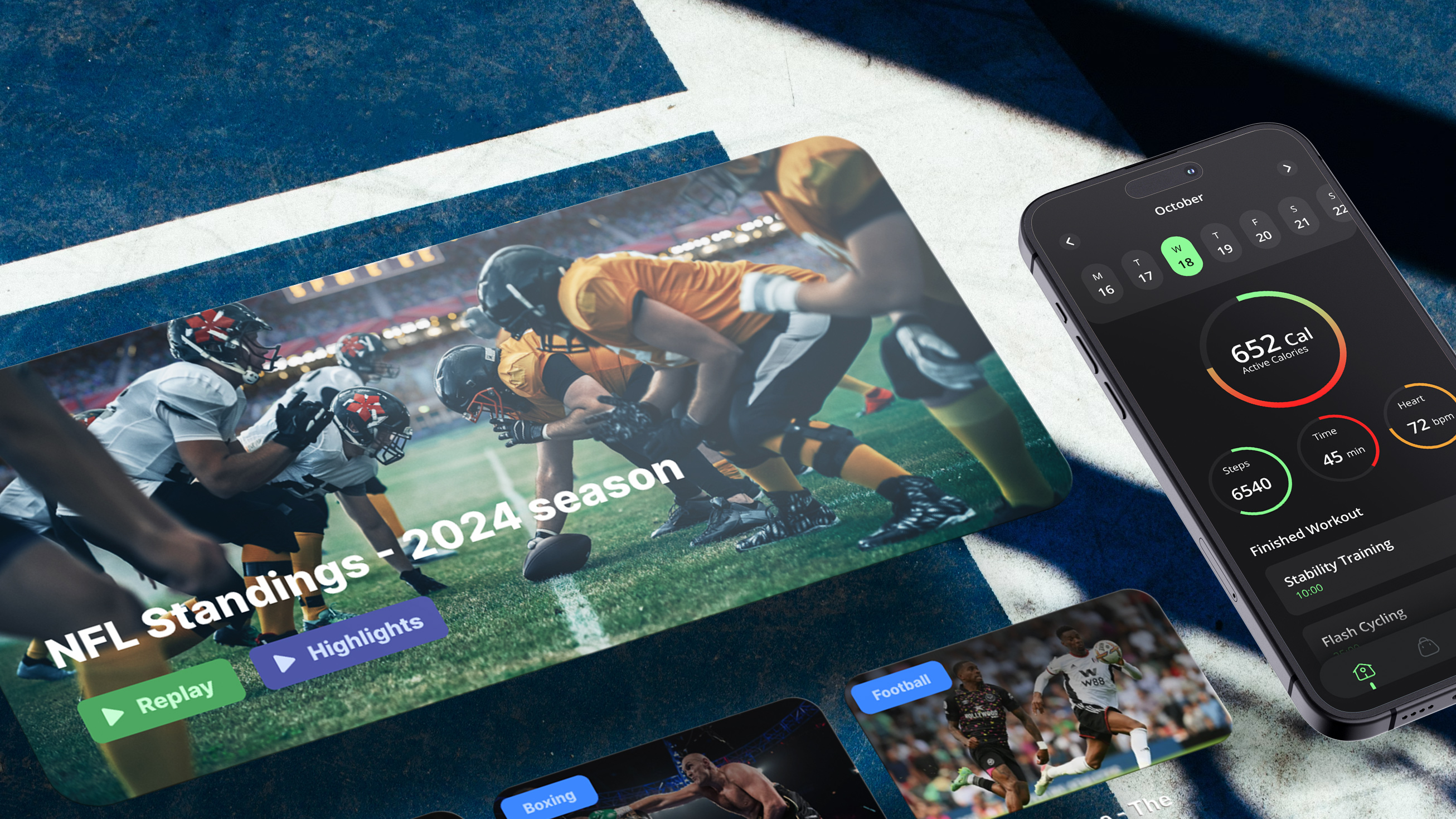Is Roku channel creation worth your energy and budget?
Nearly seventeen years after Roku launched its first connected streaming device, it now proudly holds the title of the heavyweight champion among OTT platforms, especially in the USA.
So today, crafting a Roku channel is about:
- Amplifying your multi-screen strategy and planting roots in a fertile ecosystem with a vast, active audience that the platform keeps literally glued — Roku has surpassed 90 million streaming households in the first week of January 2025, covering nearly half of U.S. broadband homes, with 32 billion streaming hours in Q3 2024.
- Boosting visibility and exposure, as Roku’s ecosystem spans streaming sticks, integrated TVs, and mobile apps, ensuring сross-device accessibility with consistent performance and interface.
- Leveraging the proven momentum as Roku is number one TV OS in the U.S., Canada, and Mexico (according to Circana’s Retail Tracking Service). And it isn’t slowing down — streaming hours jumped 20% year over year, proving that once users enter the Roku world, they stick around. For content creators and distributors, that’s an open invitation to a loyal, growing audience.
- Tapping into multiple monetization options — whether you’re exploring AVOD, SVOD, TVOD, or FAST, the platform gives the flexibility to tailor monetization strategy to any content and audience.
- Enjoying ongoing upgrades and Roku’s commitment to enhancing user experience — through updates like Smart Picture and Backdrops in 2024 that ensure it remains a favorite in living rooms everywhere.
However, let’s not forget that with 36,589 apps and channels on Roku Channel Store (and counting), vying for viewer attention, visibility is anything but guaranteed. And a well-executed launch isn’t just a nice-to-have — it’s your secret weapon for cutting through the noise.
How can you make it happen?
Read on to explore the essential steps and key moves on how to start a channel on Roku that will make your sleek debut on the platform impossible to ignore.
Real case story: Borderless video content distribution
- Web
- Mobile
- Smart TV
- Apple TV
- Fire TV
- Roku
All haven’t been left behind, as soon as the OVP developed by Oxagile aims to cover multiple platforms to build a massive audience.
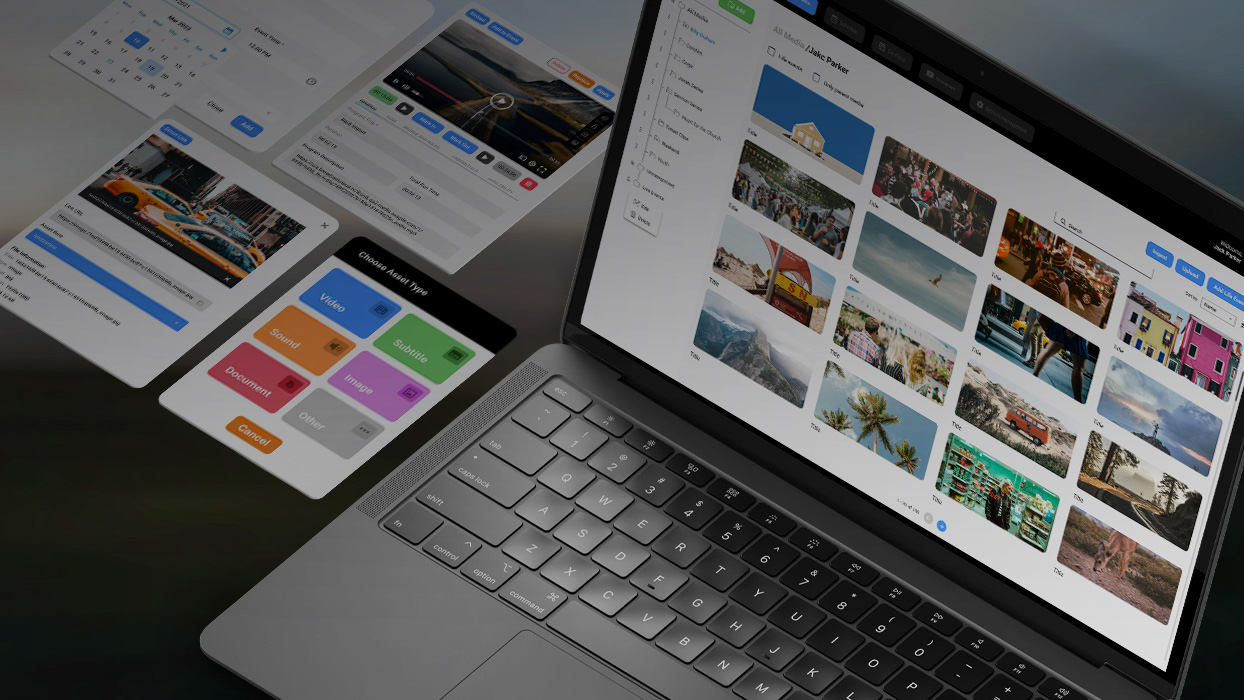
Platform potential and constraints you need to know from day one
This platform is a treasure trove of opportunity, yet it comes with its own set of peculiarities that diverge sharply from platforms like Android TV, Fire TV, or web-based environments.
Drawing from our extensive track record of building Roku channels, we’ve identified the critical, both positive and dubious elements, that set it apart, shape its ecosystem and undoubtedly merit your attention.
Limitations
- Proprietary programming language
Roku sets itself apart from the crowd with BrightScript, a proprietary scripting language that powers its ecosystem. Unlike the widely adopted JavaScript or Python, BrightScript is a Roku original — potent, purpose-built, and somewhat exclusive. This singularity is a double-edged sword: it fuels Roku’s ability to deliver seamless streaming experiences, but it also narrows the field of expert practitioners. For developers accustomed to mainstream languages, this can feel like stepping into uncharted territory.
- Proprietary component markup
Developers need to work with Roku’s own markup for components, SceneGraph, which may add complexity to the development process and force developers to use a fixed set of pre-made building blocks. This rigidity often means extra effort to achieve creative, unique or complex design slowing down the process for those unfamiliar with the tool.
- Documentation gaps
While Roku provides many examples for small reusable components, it falls short when it comes to showcasing fully realized applications. You’ll find guidance on crafting a button or a scrolling list, but a comprehensive blueprint for an end-to-end channel — complete with authentication, content libraries, and polished navigation — remains elusive.
Possibilities
- Application versatility
Roku enables developers to create diverse app types, including:
- Channels
- Games
- Screensavers, which are visual displays that activate when the device is idle and are particularly popular among users.
- Efficient review and transparent certification
The platform maintains clear and comprehensive certification requirements, ensuring straightforward compliance for creators while minimizing delays. Additionally, Roku’s app review process is streamlined and efficient, with approvals often finalized in as little as 24 hours. Once certified, developers can seamlessly deploy their channels within days, enabling a swift transition from approval to public launch.
- Flexible media integration
Roku offers a robust native media player, yet limited UI customization and basic feature sets can leave you wanting more, especially for complex apps. And developers can further enhance cross-platform consistency by integrating third-party solutions like Bitmovin, for instance, that can act as a wrapper around Roku’s native capabilities, providing a consistent playback experience across Roku, iOS, Android, and web environments.
In our real-world projects, we’ve implemented similar approaches, layering Bitmovin’s SDK over Roku’s native player ensuring uniform functionality across devices. And while this didn’t replace the native player entirely, it enhanced it with advanced features and added more flexibility.
Exposing the engine and unlocking the tech
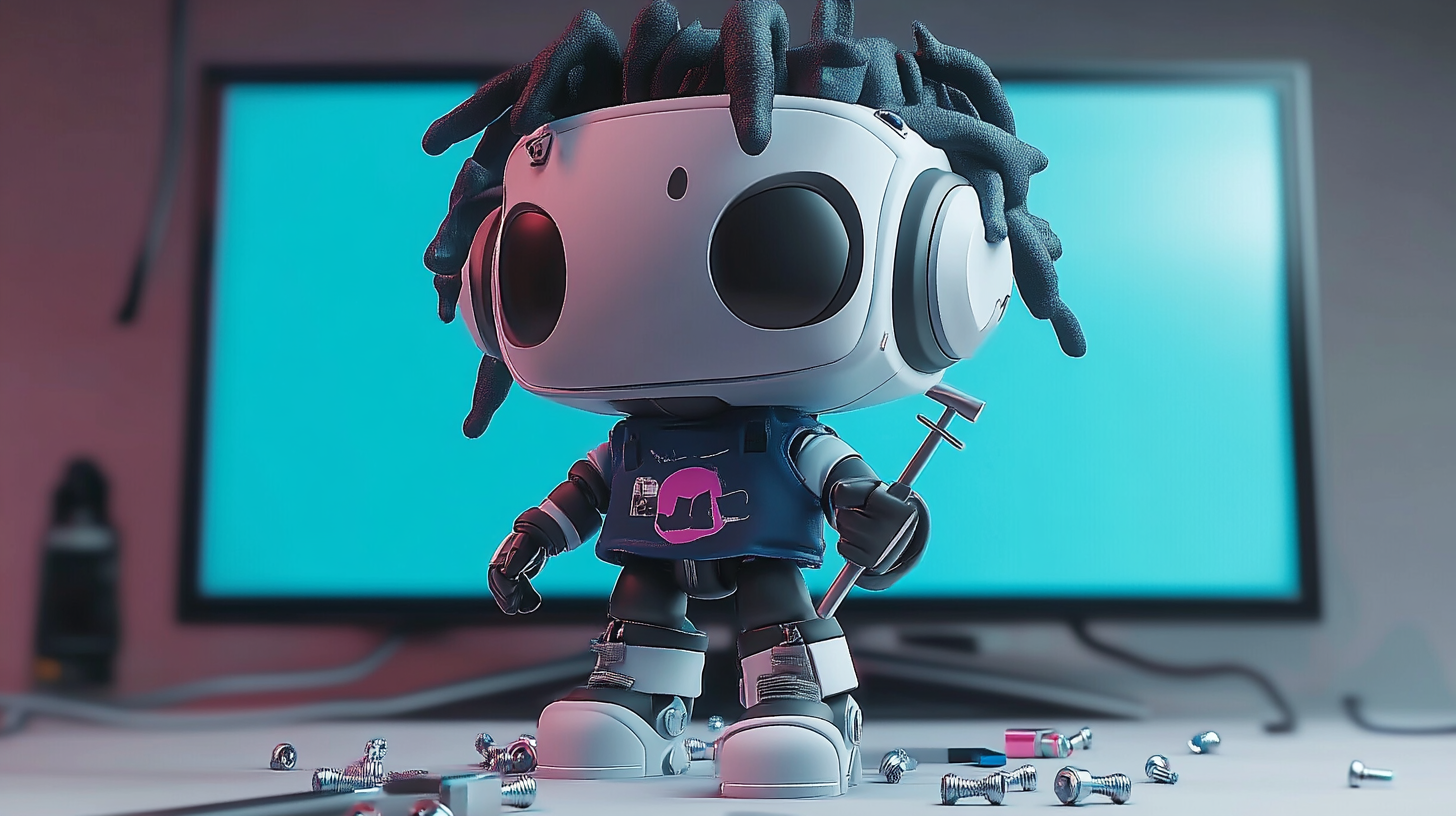
While Roku application development shares some DNA with platforms like LG or Samsung, its architecture still presents distinct performance optimization considerations. Through practical engagement with these nuances and subtleties, we’ve highlighted the following focal points:
Overcoming constraints in style and design
At Oxagile, we’ve seen how Roku’s BrightScript and SceneGraph tools put some limits on style and design. But while you can’t create absolutely anything you imagine, our practical experience shows that it’s possible to get creative within these boundaries, finding smart ways to add unique touches and tailored styling, like making buttons or menus pop in ways that feel fresh and still fit perfectly Roku.
Meeting interaction timing requirements
Launch times for channels and videos are make-or-break for Roku certification. So the ultimate advice here is to track them, spot bottlenecks, and optimize to pass store reviews.
Adapting media for a device-agnostic experience
Delivering flawless Roku apps across diverse hardware demands meticulous attention to compatibility. To ensure seamless performance, it’s a must to analyze device specifications — from screen resolutions to processing power — and tailor media formats to each device’s capabilities.
Video player integration
Roku’s native media player is reliable and robust, but flexibility is key and harnessing the strengths of the native Roku player for maximum performance is important. That’s why for clients with existing video players designed for other platforms, we integrate third-party options seamlessly to ensure harmony across Roku and other devices.
Limited SDK support
Unlike other platforms, Roku often lacks ready-made SDKs and third-party libraries, requiring custom feature development. However, skilled developers (by that, we mean Oxagile’s minds of course) can create new Roku-specific functionality from scratch, ensuring smooth operation of TV apps and games.
Multi-platform consistency
When Roku is part of a broader strategy covering multiple platforms, delivering authenticated streaming and unified design is a must. And ensuring consistency across connected TVs, mobile devices, set-top boxes, and game consoles for catch-up viewing and seamless user experiences is what at core of any development process.
How much does it cost to start a Roku channel?
Roku channel development costs can differ significantly based on a range of factors. Simpler channels built with Roku’s Direct Publisher tool are less resource-intensive thanks to its straightforward, no-code setup, whereas custom channels crafted using the Roku SDK—with more intricate designs or subscription integrations — naturally require a bigger investment.
Of course, going the custom route will cost more, but it’s often the preferred choice if you’re aiming for a truly unique app tailored to your vision. The development approach also matters: outsourcing to seasoned developers or keeping it in-house shifts the cost dynamic, with external expertise potentially speeding things up while ensuring polish.
Content hosting is another piece of the puzzle, as Roku doesn’t handle video storage — third-party platforms like Vimeo or Amazon step in, with fees tied to bandwidth and volume. Ongoing maintenance, like updates or fixes, adds to the tally, as does weaving in monetization options like ads or subscriptions, which demand more sophisticated work.
If you already have specific ideas about what you want, thanks to our 20+ years of expertise in developing custom OTT solutions, we can show you — using real-world examples from our practice — exactly how much it will cost. Moreover, while Roku’s official resources may lack the extensive examples you’d hope to lean on when brainstorming ideas for your app, we at Oxagile have, over time, built a substantial portfolio of Roku projects. This has enabled us to create a comprehensive library of app examples and clear, detailed explanations of how various features and functionalities work. As a result, we can shape your vision, demonstrate what’s achievable, and, of course, provide a concrete, itemized breakdown of what will drive the cost of developing your app in your specific case.
Real-life example: custom Roku app for a leading music streamer
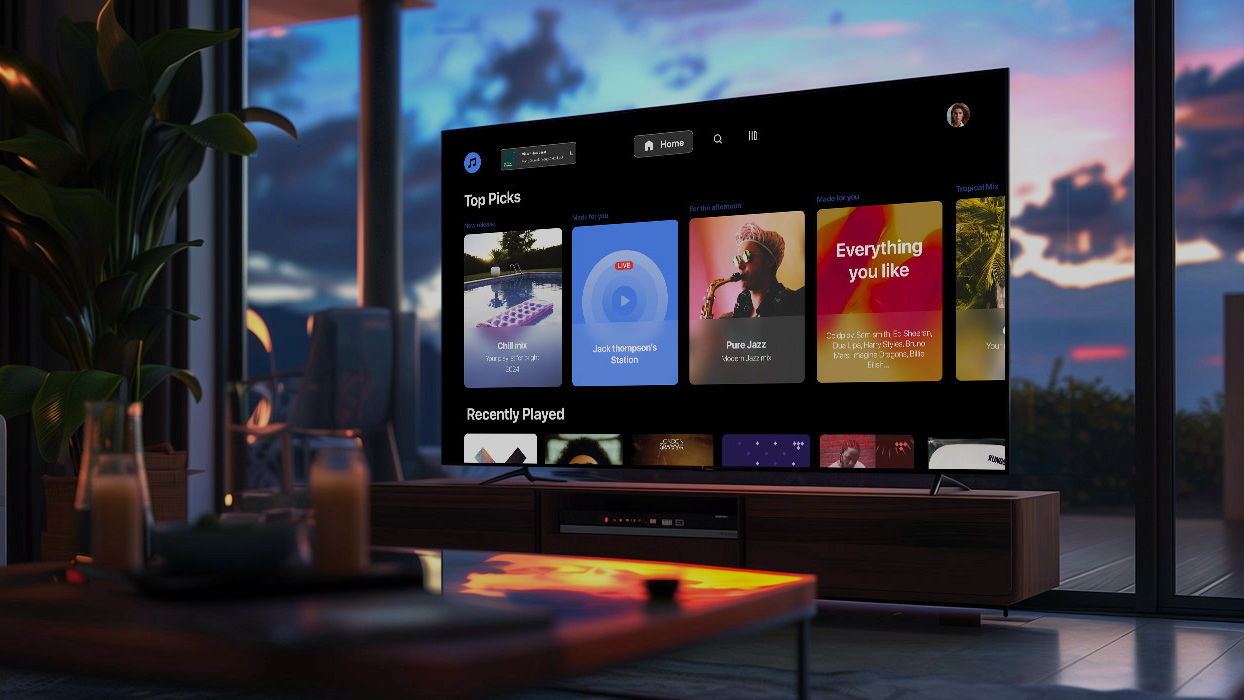
We could go on about why it’s smarter to work with professional developers for creating Roku channels instead of navigating Roku libraries on your own. But why talk when results can speak louder?
Take our collaboration with a leading music streamer as an example. We built a custom Roku app that combined seamless streaming performance, cross-device compatibility, and an engaging user interface. Tackling challenges like interaction timing optimization, device adaptability, and video player integration, our expertise delivered a polished, high-performing platform that exceeded expectations.
Being a gateway to 80 million active accounts hungry for content, Roku is a puzzle definitely worth solving for expanding your content’s footprint. Now all you need to do is put these pieces of the puzzle into success. If you’re ready, our Roku experts, who’ve devoured technical challenges for breakfast, will gladly guide you through the finer technical details about Roku development thrilling ride — part science and part art of pushing boundaries within a defined playground.
Need to launch your Roku channel faster and smarter?
Knowing the ins and outs of Roku TV apps development, we’re at your service to craft a TV app so sleek, your audience forgets the remote exists.

